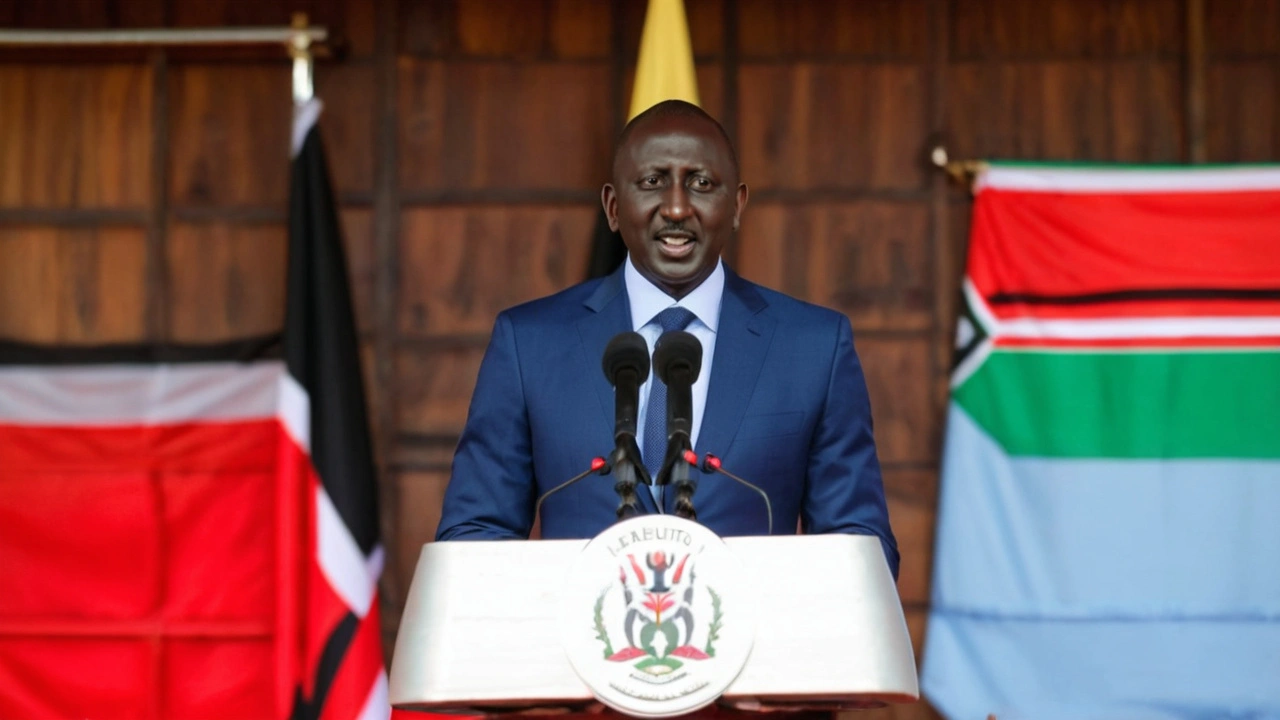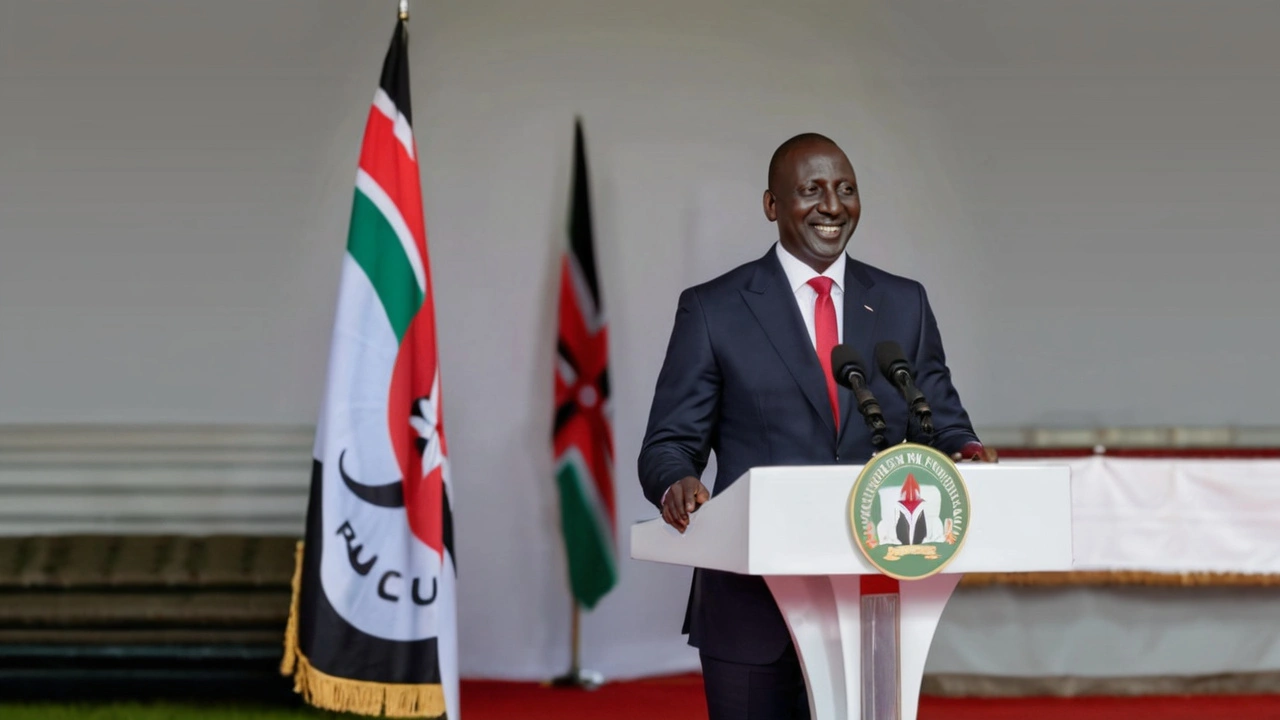Introduction
Kenya's political landscape is undergoing significant shifts as President William Ruto embarks on the arduous task of forming a new cabinet. This initiative comes at a pivotal time, as the president faces an array of challenges, from balancing the intricate web of political interests to addressing the pressing demands of the country's youth and managing the critical opposition. Ruto's recent decision to dismiss his entire cabinet, save for one minister, marks a bold move aimed at reconstituting a more efficient and effective government.
The Need for Change
The impetus for this drastic cabinet reshuffle can be traced back to the waves of anti-government protests that have gripped the nation in recent weeks. Initially sparked by opposition to a new tax proposal, these demonstrations quickly escalated into a broader call for President Ruto's resignation. Amidst the chaos and public outcry, it became evident that a change in leadership within the government was necessary. Critics have long accused Ruto's former ministers of incompetence, corruption, and an extravagant lifestyle that starkly contrasts with the struggles of ordinary Kenyans.
A Leaner, More Efficient Government
President Ruto's vision for a new cabinet involves forming a 'broad-based political arrangement' that prioritizes efficiency and effectiveness. To that end, he has announced a cabinet comprising six former ministers and five new appointees. This blend of experienced and fresh faces aims to strike a balance between continuity and innovation. However, this strategic move is not without its challenges. Critics and political analysts alike are scrutinizing the president's choices, questioning whether the new ministers will truly serve the best interests of the nation or merely perpetuate existing issues.
Political Balancing Act
One of the most pressing issues President Ruto faces is the need to balance competing political interests. His deputy, Rigathi Gachagua, has emerged as a potential threat to the president's plans. Gachagua, who has previously expressed grievances over being sidelined, has been instrumental in fomenting rebellion against the government in the populous Mt. Kenya region. This internal discord adds another layer of complexity to Ruto's efforts to form a cohesive and effective cabinet.
Responding to Youth Demands
The demands of Kenya's youth represent another critical factor in the president's decision-making process. With the country's young population becoming increasingly vocal about their aspirations and frustrations, Ruto's ability to address their concerns will be crucial in securing his legacy and re-election prospects. By embracing the opposition and responding to the needs of young Kenyans, the president hopes to foster a more inclusive and forward-looking government.
Opposition's Skepticism
Opposition leader Kalonzo Musyoka has expressed skepticism about the new cabinet, labeling it a betrayal of the Kenyan people. Musyoka's critique centers on the belief that the reshuffle does not go far enough in addressing the systemic issues that have long plagued the government. According to Musyoka, merely changing the faces at the helm will not suffice to bring about the meaningful reforms that the country desperately needs.
Future Implications
The success or failure of President Ruto's new cabinet will have far-reaching implications for Kenya's political future. If Ruto manages to create a government that effectively addresses the nation's needs and restores public faith, it could pave the way for a more stable and prosperous future. However, the president also risks igniting new political tensions, particularly with his deputy, which could potentially destabilize the government even further.

Conclusion
In conclusion, President William Ruto's efforts to form a new cabinet represent a delicate balancing act, fraught with challenges and opportunities. As he navigates the complex political landscape, Ruto must carefully consider the competing interests and demands of various stakeholders. Whether he succeeds in creating a leaner, more efficient government that addresses the critical issues facing Kenya today remains to be seen. One thing is certain: the coming weeks and months will be crucial in determining the future trajectory of the nation's political landscape.

Traci Walther
July 19, 2024 AT 23:50Wow, what a roller‑coaster for Kenya’s leadership!!! 🚀💥 Ruto’s cabinet shuffle is shaking up the political arena like never before!!!
Ricardo Smalley
July 20, 2024 AT 00:56Oh sure, dumping the whole team and keeping just one minister is exactly the subtle, nuanced approach needed to win over protestors. I mean, nothing screams stability like a sudden purge. Maybe the youth will finally get a taste of real representation, or maybe it’s just another publicity stunt. Either way, the opposition will have plenty to chew on. Let’s see if "broad‑based" actually means "broad‑based".
Sarah Lunn
July 20, 2024 AT 01:55The entire cabinet overhaul is a clear indication that President Ruto has finally grasped the gravity of the nation’s grievances. It is unacceptable that previous ministers engaged in overt corruption while the populace suffered. By retaining only a single minister, the administration signals both desperation and an attempt at redemption. However, the plethora of former ministers re‑appointed raises serious concerns about genuine reform. The balance between experience and novelty must be carefully calibrated, lest the government collapse under its own weight. Moreover, the deputy’s ambitions cannot be ignored; internal power struggles threaten policy coherence. Citizens deserve transparent criteria for these appointments, not mere political bargaining. Ultimately, the success of this reshuffle hinges on concrete actions, not just reshuffled titles.
Gary Henderson
July 20, 2024 AT 02:45Looks like Ruto’s trying to hit the reset button-let’s hope it actually works.
Julius Brodkorb
July 20, 2024 AT 03:26Yo, mixing old hands with fresh faces could be the sweet spot-if they actually play nice. No drama, just results.
Juliana Kamya
July 20, 2024 AT 04:00From a governance perspective, integrating seasoned ministers with innovative newcomers creates a synergistic framework that can accelerate policy implementation. This hybrid model leverages institutional memory while injecting fresh strategic thinking. If managed properly, the cabinet could become a high‑performance engine for national development. The stakes are monumental, and the potential impact on socioeconomic indicators is enormous.
Erica Hemhauser
July 20, 2024 AT 04:25Replacing faces without addressing systemic rot is a hollow gesture; true reform demands structural overhaul.
Hailey Wengle
July 20, 2024 AT 04:45Wake up, everyone!!! The elite are using this "cabinet reshuffle" as a smokescreen to cement their globalist agenda!!! They’ll keep siphoning off resources while claiming progress!!!
Maxine Gaa
July 20, 2024 AT 05:01While the critique highlights an essential truth, it also invites a deeper examination of the underlying power dynamics. If the apparatus of governance remains fundamentally unchanged, any personnel shift merely reshuffles the deck without altering the game. One might ask: what mechanisms are in place to ensure accountability beyond the superficial? The interplay between entrenched interests and emergent public demands creates a complex tapestry that defies simplistic solutions. Moreover, the youth’s aspirations could serve as a catalyst for genuine institutional transformation, provided they are harnessed effectively. Thus, the conversation must move from surface‑level indictments to substantive structural reforms.
Katie Osborne
July 20, 2024 AT 05:16It is evident that the rhetorical flourish employed in the preceding analysis lacks substantive evidence. A rigorous assessment of the cabinet composition requires empirical data rather than conjecture.
Kelvin Miller
July 20, 2024 AT 05:30I concur that the momentum generated by this overhaul could invigorate public engagement. Nonetheless, sustained transparency will be crucial to maintain confidence. Let us hope the administration implements clear metrics for performance.
Sheri Engstrom
July 20, 2024 AT 07:26The political theater unfolding in Nairobi is nothing short of a meticulously choreographed spectacle, designed to placate a populace whose patience has been eroded by years of mismanagement and graft. Ruto’s decision to dismiss the entire cabinet, sparing only a token minister, is a stark acknowledgment of the untenable status quo that has persisted under the veneer of democratic governance. Yet, the optics of this purge betray a deeper strategic calculus aimed at reconstituting a power base that can weather the relentless onslaught of protestors and dissenting factions. By reinstating six former ministers alongside five newcomers, the administration signals an intent to blend institutional memory with fresh perspectives, a maneuver that could either stabilize or further destabilize the already volatile political equilibrium. The inclusion of seasoned politicians, however, raises unsettling questions about the sincerity of reform, given their documented histories of corruption, nepotism, and fiscal imprudence. Conversely, the appointment of untested officials may inject much‑needed vigor but also carries the risk of inexperience, which could exacerbate policy paralysis. The deputy’s burgeoning rivalry, exemplified by Rigathi Gachagua’s maneuvers in the Mt. Kenya region, underscores an intra‑governmental schism that threatens to fracture the coalition’s unity. This internal discord, coupled with the palpable disillusionment among Kenya’s burgeoning youth demographic, creates a perfect storm that could either catalyze transformative change or precipitate a descent into deeper unrest. Moreover, the opposition’s vehement skepticism, embodied by Kalonzo Musyoka’s denunciations, reflects a broader societal distrust in superficial rebranding efforts that fail to address structural inequities. The surge of anti‑government protests, initially provoked by a contentious tax proposal, has evolved into a more existential challenge to Ruto’s legitimacy, thereby intensifying the pressure for substantive policy overhaul. In this context, the efficacy of the new cabinet will be measured not merely by its composition but by its capacity to deliver tangible improvements in public services, economic stability, and democratic accountability. Failure to do so would validate the opposition’s claim that mere personnel changes are insufficient sans a comprehensive overhaul of governance frameworks. Conversely, a demonstrable shift toward transparency, fiscal responsibility, and inclusive policymaking could restore a measure of public confidence and reinforce Kenya’s democratic institutions. It is incumbent upon the President to articulate clear performance benchmarks, ensure rigorous oversight, and cultivate an environment where dissent is met with constructive dialogue rather than suppression. The stakes are unequivocally high, for the trajectory of Kenya’s political future hinges on whether this "balancing act" merely masks entrenched power structures or genuinely reconfigures them for the public good.
Prudhvi Raj
July 20, 2024 AT 09:06Ruto’s mix of veterans and newcomers could foster continuity while injecting fresh ideas. Clear communication will be key.
jessica zulick
July 20, 2024 AT 10:30Amid the turbulence, it’s vital to remember that dialogue can bridge divides. Let’s focus on shared goals and move forward together.
Partho A.
July 20, 2024 AT 11:36Indeed, this strategic reshuffle presents a unique opportunity for Kenya to realign its governance priorities. By embracing both experience and innovation, the administration can address longstanding challenges while fostering sustainable development. It is essential that all stakeholders remain committed to transparency and collaborative problem‑solving. Together, we can usher in a new era of prosperity for the nation.
Jason Brown
July 20, 2024 AT 12:26The articulated vision of a "leaner, more efficient" cabinet must be substantiated by rigorous policy frameworks and measurable outcomes. Without such precision, the proclamation remains mere rhetoric. I welcome the intent behind these reforms and hope they are executed with methodological rigor. Let us all aspire to elevate the standard of governance.
Heena Shafique
July 20, 2024 AT 13:00One might sarcastically applaud the "broad‑based" approach as the pinnacle of political ingenuity, yet the underlying reality demands earnest introspection. A truly inclusive cabinet should transcend tokenism and embody equitable representation, not merely placate dissent. Let us hope the forthcoming administration transcends performative gestures.